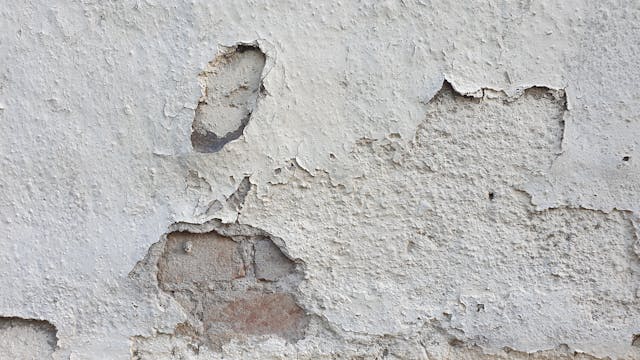What exactly is “Normal Wear and Tear”?
Key Takeaways
- Normal wear and tear includes minor scuffs, worn carpets, and fading paint that naturally occur over time and shouldn’t be deducted from a security deposit.
- Damage refers to significant issues caused by neglect or misuse, such as broken fixtures, large holes, or pet-related destruction, which should be charged to the tenant.
- Regular inspections and clear lease terms are crucial for identifying and documenting wear and tear vs. damage, helping landlords avoid disputes and ensure fair maintenance practices.
Should scuff marks, worn carpet, and minor scratches be deducted from a tenant’s security deposit, or are they simply signs of normal wear and tear?
At Redsail Property Management, we know how challenging it can be to determine the difference.
Misclassifying wear and tear as damage could lead to legal disputes, while overlooking actual damage might cost you.
This guide will help you identify what qualifies as normal wear and tear, what constitutes damage, and how to handle these situations properly to protect your investment.
Understanding Normal Wear and Tear vs. Damage
Keep reading to learn the differences between normal wear and tear vs. damage:
Definition of Normal Wear and Tear
Normal wear and tear refers to the gradual and expected deterioration of a property over time due to regular use.
Every home experiences this, regardless of how careful the tenants are.
It is not caused by neglect, abuse, or misuse but simply by everyday living.
Some common examples include:
- Fading or minor discoloration of paint and wallpaper.
- Worn carpets in high-traffic areas.
- Slightly loose doorknobs or cabinet handles.
- Small scuffs or scratches on hardwood floors.
- Light scratches on countertops from regular use.
- Dull grout in bathroom tiles.
These are expected changes that naturally occur as a result of normal use and should not be deducted from a tenant’s security deposit.
Definition of Damage
Damage, on the other hand, refers to any destruction or significant deterioration caused by negligence, misuse, or abuse.
It goes beyond normal aging and wear.

Some common examples of tenant-caused damage include:
- Large holes in walls.
- Burns or permanent stains on carpets.
- Broken windows or doors.
- Water damage from negligence (e.g., unreported leaks).
- Missing or broken fixtures.
- Pet-related damage (chewed molding, scratched floors).
These types of issues are not part of the normal aging process and can be deducted from a tenant’s security deposit to cover the cost of repairs.
How to Identify and Document Wear and Tear vs. Damage
Conduct Move-In and Move-Out Inspections
To fairly assess a rental unit’s condition, it is essential to conduct detailed move-in and move-out inspections.
Document everything with written checklists, high-quality photographs, and video recordings (if possible).
This documentation serves as evidence if any disputes arise over security deposit deductions.
Consider the Length of Tenancy
The length of time a tenant has lived in a unit plays a significant role in determining whether a condition is due to normal wear and tear or neglect.
For example:
- A carpet that looks slightly worn after a one-year lease might not be normal wear and tear.
- A carpet that looks worn after five years of tenancy is likely due to normal use.
- Faded paint over several years is expected, but large, unauthorized paint jobs or excessive holes in walls are considered damage.
Evaluate the Severity of the Issue
Minor issues that do not impact the unit’s functionality typically fall under normal wear and tear.

However, if a problem requires repair or replacement beyond routine maintenance, it likely qualifies as damage. For example:
- A loose doorknob vs. a missing doorknob.
- A minor scratch on a countertop vs. a deep crack.
- Slightly dirty walls vs. extensive crayon or marker stains.
Factor in Materials and Quality
The durability and quality of materials used in the rental property also influence how wear and tear is assessed.
Low-cost carpets will naturally wear out faster than high-end hardwood floors. Older appliances may start to break down from age rather than tenant misuse.
Handling Normal Wear and Tear and Damage Fairly
Budget for Routine Maintenance
Landlords should expect to perform routine maintenance between tenants.
This includes repainting walls, replacing worn carpet, and servicing appliances. Setting aside a budget for these expenses ensures that the unit remains in good condition over time.
Set Clear Lease Terms
To avoid confusion, outline in the lease agreement what is considered normal wear and tear versus tenant-caused damage.
Tenants should also be informed about their responsibility to report maintenance issues promptly to prevent further damage.
Deduct Fairly from Security Deposits
When deducting from a security deposit, landlords should only charge for actual damage beyond normal wear and tear.
Any deductions should be accompanied by an itemized list, including receipts or repair estimates, to provide transparency.
It is essential to follow state laws regarding security deposit returns and dispute resolution to avoid legal complications.
Additionally, landlords should document damages thoroughly before making deductions to prevent potential disputes.

Taking photos, writing descriptions, and maintaining organized records can help justify any necessary deductions.
Open communication with tenants can also reduce misunderstandings and make the process smoother.
Failure to handle security deposits properly can lead to legal disputes and penalties for the landlord.
Conduct Regular Property Inspections
Routine property inspections (every 6–12 months) can help identify maintenance issues before they escalate.
This allows landlords to address minor problems early and determine whether tenants are caring for the property appropriately.
Bottom Line
Understanding what qualifies as normal wear and tear is essential for landlords to manage maintenance expectations and avoid unnecessary disputes.
Minor scuffs, faded paint, and worn carpets are typical over time and shouldn’t be charged to tenants.
However, significant damage like broken fixtures or unauthorized modifications should be addressed and repaired.
Redsail Property Management helps landlords navigate these issues by offering expert guidance on property maintenance, inspections, and tenant expectations, ensuring your property stays in top condition without the stress.
Contact us today to learn how we can help you maintain a fair, well-managed rental property.